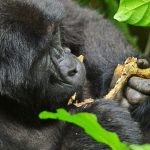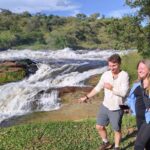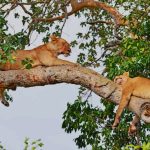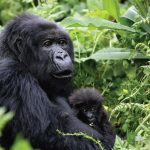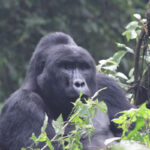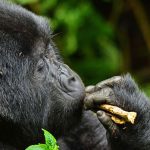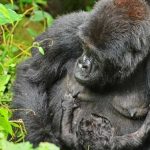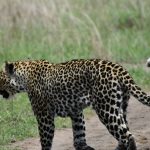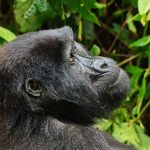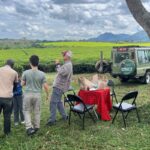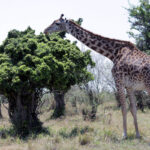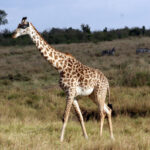How Do I Interact Responsibly with Wildlife in Queen Elizabeth National Park?
Queen Elizabeth National Park, one of Uganda’s most celebrated wildlife destinations, offers visitors a chance to observe an incredible variety of wildlife in their natural habitats. From majestic elephants and lions to the rare tree-climbing lions and hundreds of bird species, the park is a sanctuary for animal lovers and nature enthusiasts. However, interacting with these animals comes with great responsibility. To ensure a safe and enjoyable experience, visitors need to adhere to specific guidelines for responsible wildlife interaction. Whether you’re on a game drive, a boat safari, or even trekking in the nearby Bwindi Impenetrable Forest for gorillas, responsible interaction helps preserve the park’s ecosystems, keeps both tourists and animals safe, and ensures that future generations can enjoy the same experiences.

Respect the Animals’ Space and Behavior
One of the core principles of responsible wildlife interaction is maintaining a safe distance from animals. While it can be tempting to get up close for a better photograph or a closer view, this can cause unnecessary stress to the animals and disturb their natural behaviors. In Queen Elizabeth National Park, wildlife such as elephants, lions, and buffalo are part of the natural landscape and should be observed from a safe distance. Visitors are urged to stay inside their vehicles during game drives unless instructed otherwise by a guide, especially when near potentially dangerous wildlife.
Elephants, for example, may appear calm and gentle, but they can be unpredictable and territorial. Similarly, lions, though often seen lounging or resting, can become aggressive if they feel threatened or cornered. Always follow the guidance of your experienced guide, who will know how to navigate these situations safely. This respect for wildlife and their space is crucial for both the animals’ well-being and your safety.
Follow the Rules During Gorilla Trekking
A significant highlight of a visit to Queen Elizabeth National Park is the opportunity to embark on a thrilling gorilla trekking safari to Bwindi Impenetrable Forest, home to the endangered mountain gorillas. While the park is famous for its wildlife, it is important to understand that gorillas are highly endangered and should be treated with the utmost respect. Uganda’s gorilla trekking guidelines are in place to minimize human impact on these primates and help protect them from diseases and other threats.
Gorilla trekking typically involves groups of no more than 8 people at a time, and trekkers are required to maintain a distance of at least 7 meters (21 feet) from the gorillas. This distance is enforced to reduce the risk of transmitting human diseases to the gorillas, as they are susceptible to human respiratory infections. Visitors should avoid making loud noises or sudden movements when near the gorillas, as this can cause them stress or disrupt their behavior.
Limit Noise and Movement
Noise and sudden movements can be stressful for wildlife, particularly for sensitive species like gorillas, chimpanzees, and even elephants. In Queen Elizabeth National Park, visitors should always strive to minimize noise, whether in vehicles or on foot, during guided safaris. Loud conversations, the sounds of phone calls, and sudden shouts can startle the animals and cause them to retreat, disrupting the natural ecosystem.
During gorilla trekking in Bwindi Impenetrable Forest, silence is essential. Guests are asked to speak in low tones and avoid any abrupt or fast movements when approaching the gorillas. The same etiquette applies during other trekking activities in the park, such as chimpanzee tracking. Additionally, remember that the animals are wild, and any attempt to attract their attention or feed them can alter their natural behaviors, causing them to become dependent on humans, which can be harmful to both parties.
Avoid Feeding the Animals
Feeding wildlife, although tempting, is a serious violation of park rules and regulations. In Queen Elizabeth National Park, like in most wildlife reserves and national parks, feeding animals is strictly prohibited. It may seem harmless to offer a treat to a curious elephant or a monkey, but feeding wildlife can have significant negative consequences. First, it disrupts the natural feeding patterns of animals, which can lead to malnutrition or dependency on human-provided food. Second, it can create dangerous situations, especially with larger animals such as elephants or lions that may associate humans with food and become aggressive.
Feeding animals also changes their behavior, making them less wary of humans, which increases the risk of human-wildlife conflict. It is important to remember that wildlife in Queen Elizabeth National Park is accustomed to finding its food in the wild, and offering food can have unintended consequences for their health and survival.
Stay on Designated Trails and Paths
Whether you are exploring the savannah on a game drive, walking along a designated trail, or trekking through the dense forests of Bwindi, it is essential to stay on established paths and trails. Straying off the beaten track can cause environmental damage by trampling fragile vegetation or disturbing animal habitats. Many of the park’s species, particularly the smaller ones such as birds and insects, depend on undisturbed areas of the park for survival.
In Bwindi Impenetrable Forest, where the terrain can be challenging and dense, it is particularly important to follow the guide’s instructions and stay on designated trekking routes. Straying from these paths not only poses a risk to the safety of trekkers but also disturbs the natural environment of the gorillas and other wildlife. Guides are trained to ensure that visitors follow safe and responsible routes, minimizing human impact on the forest ecosystem.
Do Not Approach or Attempt to Touch the Animals
The most responsible way to interact with wildlife in Queen Elizabeth National Park is to observe them from a respectful distance without physically interacting with them. This applies to both large mammals like elephants and lions and smaller primates like chimpanzees and gorillas. Even though these animals may appear friendly or approachable, approaching them or attempting to touch them can be dangerous for both the animals and humans.
Gorillas, for example, are strong and protective creatures, and their behavior can be unpredictable. Although they share 98% of their DNA with humans, they are still wild animals, and approaching them too closely can provoke an aggressive response. Similarly, chimpanzees are social animals but can be territorial and may become hostile if they feel threatened or cornered. A guide will always provide instructions on how to behave during trekking expeditions and will make sure that visitors maintain an appropriate distance from the wildlife.
Protect the Environment and Follow Leave No Trace Principles
Responsible wildlife interaction goes beyond how we behave around animals; it also includes how we treat the environment. Queen Elizabeth National Park’s ecosystems are delicate, and maintaining their natural beauty requires conscious efforts to reduce human impact. Visitors are urged to follow the “Leave No Trace” principles, which encourage them to respect the natural environment and leave it undisturbed.
This includes avoiding littering, picking plants, or disturbing fragile ecosystems. In some areas, such as Bwindi Impenetrable Forest, there may be strict regulations on camping, lighting fires, and other activities that can alter the landscape. The park’s authorities are committed to preserving its biodiversity, and responsible visitor behavior is essential to maintaining the park’s ecological balance.
Engage with the Local Communities
Another important aspect of responsible wildlife interaction is engaging with the local communities around Queen Elizabeth National Park. These communities play a significant role in the conservation of the park’s wildlife, and responsible tourism helps support their livelihoods. Visitors can interact with local people through cultural visits, where they can learn about traditional practices and how the communities coexist with wildlife.
Support local businesses and engage in activities that benefit both the community and the park’s conservation efforts. Many lodges in the area are community-run or involved in conservation efforts, offering guests the opportunity to support sustainable tourism while enjoying their stay. These interactions not only contribute to the economy of the local area but also foster a sense of ownership and responsibility for the park’s preservation.

Conclusion
Interacting responsibly with wildlife in Queen Elizabeth National Park is essential for the animals’ well-being and the success of conservation efforts. By following the park’s guidelines and regulations, such as maintaining a safe distance from animals, avoiding feeding them, and staying on designated paths, visitors can enjoy a safe, respectful, and enriching experience. Responsible behavior not only enhances the safari experience but also ensures that the park’s wildlife and ecosystems remain protected for future generations. Whether on a game drive, a boat safari, or a gorilla trek, every visitor has a role to play in preserving the beauty of Queen Elizabeth National Park and its remarkable wildlife. By respecting the animals and the environment, you contribute to the long-term success of wildlife conservation in Uganda.

